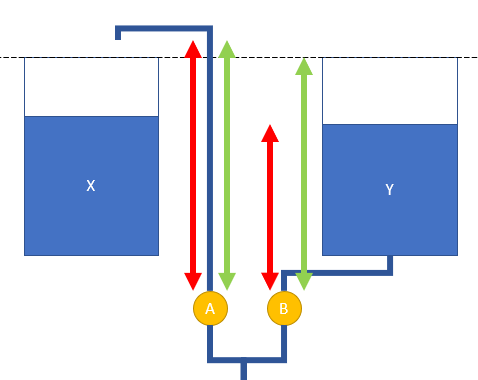agentbud
Well-Known Member
Things that make me go hmmmm. For the purposes of this question, let's assume a "semi-closed" transfer from a fermenter to a keg where neither of the vessels are pressurized and both are vented so that only gravity is being used. A single hose goes from the drain valve on the fermenter to the beer out post on the keg. The fermenter is set at a height where the drain valve is just above the top of the keg. Naturally gravity would do its thing and the beer would start transferring. But, what happens as the volume of liquid in the fermenter decreases and that in the keg increases. Since the keg is being filled from the bottom up, does it ever get to the point where the liquid pressure in the keg becomes greater than that of the gravity pushing the beer out of the long tube at the bottom of the keg such that it stops flowing? If yes, would the flow start again of the fermenter was raised higher, possibly increasing the forces of the beer coming down over that of the pressure of the liquid in the keg?




